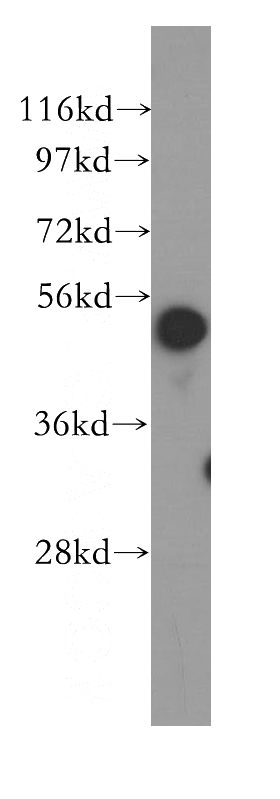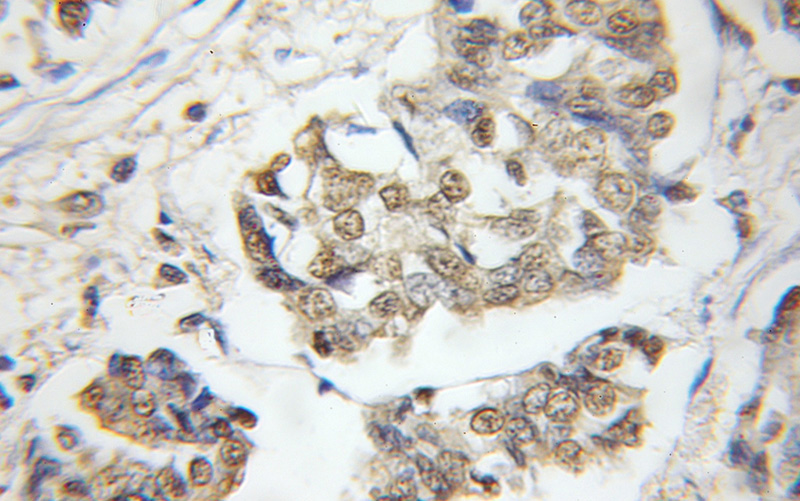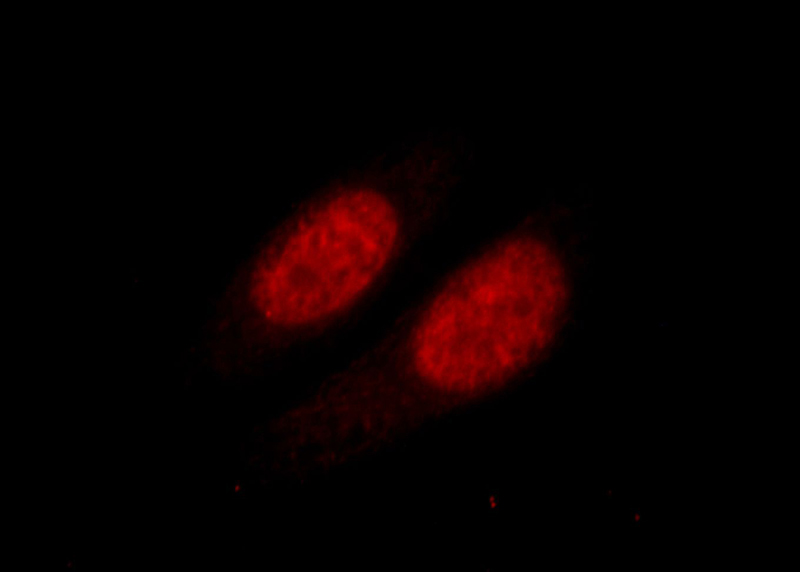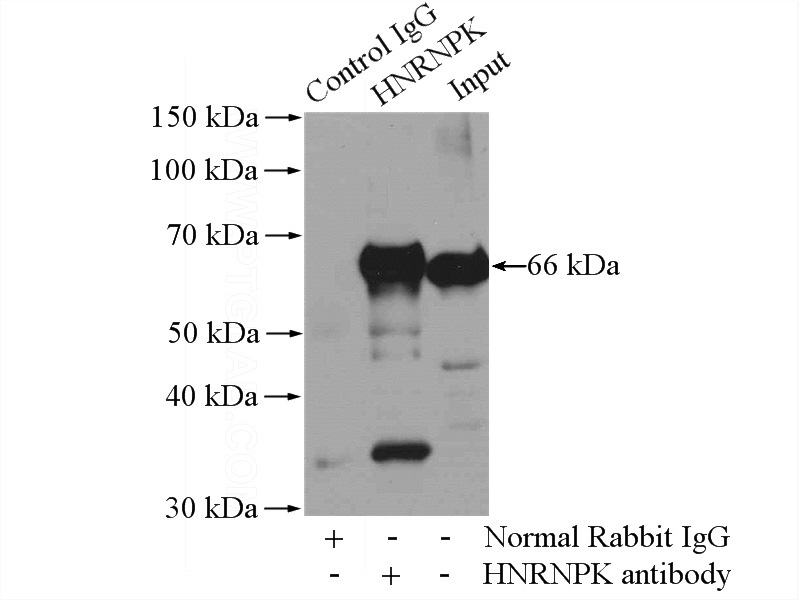-
Product Name
HNRNPK antibody
- Documents
-
Description
HNRNPK Rabbit Polyclonal antibody. Positive WB detected in HeLa cells. Positive IP detected in HeLa cells. Positive FC detected in HepG2 cells. Positive IHC detected in human breast cancer tissue. Positive IF detected in HepG2 cells. Observed molecular weight by Western-blot: 51 kDa
-
Tested applications
ELISA, WB, IHC, IF, FC, IP
-
Species reactivity
Human,Mouse,Rat; other species not tested.
-
Alternative names
CSBP antibody; FLJ41122 antibody; hnRNP K antibody; HNRNPK antibody; HNRPK antibody; TUNP antibody
-
Isotype
Rabbit IgG
-
Preparation
This antibody was obtained by immunization of HNRNPK recombinant protein (Accession Number: XM_017014668). Purification method: Antigen affinity purified.
-
Clonality
Polyclonal
-
Formulation
PBS with 0.1% sodium azide and 50% glycerol pH 7.3.
-
Storage instructions
Store at -20℃. DO NOT ALIQUOT
-
Applications
Recommended Dilution:
WB: 1:500-1:5000
IP: 1:500-1:5000
IHC: 1:20-1:200
IF: 1:10-1:100
-
Validations

HeLa cells were subjected to SDS PAGE followed by western blot with Catalog No:111509(HNRNPK antibody) at dilution of 1:300

Immunohistochemical of paraffin-embedded human breast cancer using Catalog No:111509(HNRNPK antibody) at dilution of 1:50 (under 10x lens)

Immunofluorescent analysis of HepG2 cells, using HNRNPK antibody Catalog No:111509 at 1:25 dilution and Rhodamine-labeled goat anti-rabbit IgG (red).

IP Result of anti-HNRNPK (IP:Catalog No:111509, 4ug; Detection:Catalog No:111509 1:1000) with HeLa cells lysate 2000ug.

1X10^6 HepG2 cells were stained with .2ug HNRNPK antibody (Catalog No:111509, red) and control antibody (blue). Fixed with 90% MeOH blocked with 3% BSA (30 min). Alexa Fluor 488-congugated AffiniPure Goat Anti-Rabbit IgG(H+L) with dilution 1:1000.
-
Background
HNRNPK belongs to the heterogeneous nuclear ribonucleoprotein family of 20 proteins that participate in a wide range of key cellular functions involving many of the pathways implicated, disrupted or dysregulated in tumor development and progression. It is also a conserved pre-mRNA-binding protein that is involved in multiple processes of gene expression, including chromatin remodeling, transcription, and mRNA splicing, translation, and stability
-
References
- Fan X, Xiong H, Wei J. Cytoplasmic hnRNPK interacts with GSK3β and is essential for the osteoclast differentiation. Scientific reports. 5:17732. 2015.
- Liu C, Zhang A, Guo J. Identification of human host proteins contributing to H5N1 influenza virus propagation by membrane proteomics. Journal of proteome research. 11(11):5396-405. 2012.
- Gao X, Wang JY, Gao LM, Yin XF, Liu L. Identification and analysis of glycogen synthase kinase 3 beta1 interactome. Cell biology international. 37(8):768-79. 2013.
- Szerlong HJ, Herman JA, Krause CM. Proteomic characterization of the nucleolar linker histone H1 interaction network. Journal of molecular biology. 427(11):2056-71. 2015.
Related Products / Services
Please note: All products are "FOR RESEARCH USE ONLY AND ARE NOT INTENDED FOR DIAGNOSTIC OR THERAPEUTIC USE"
